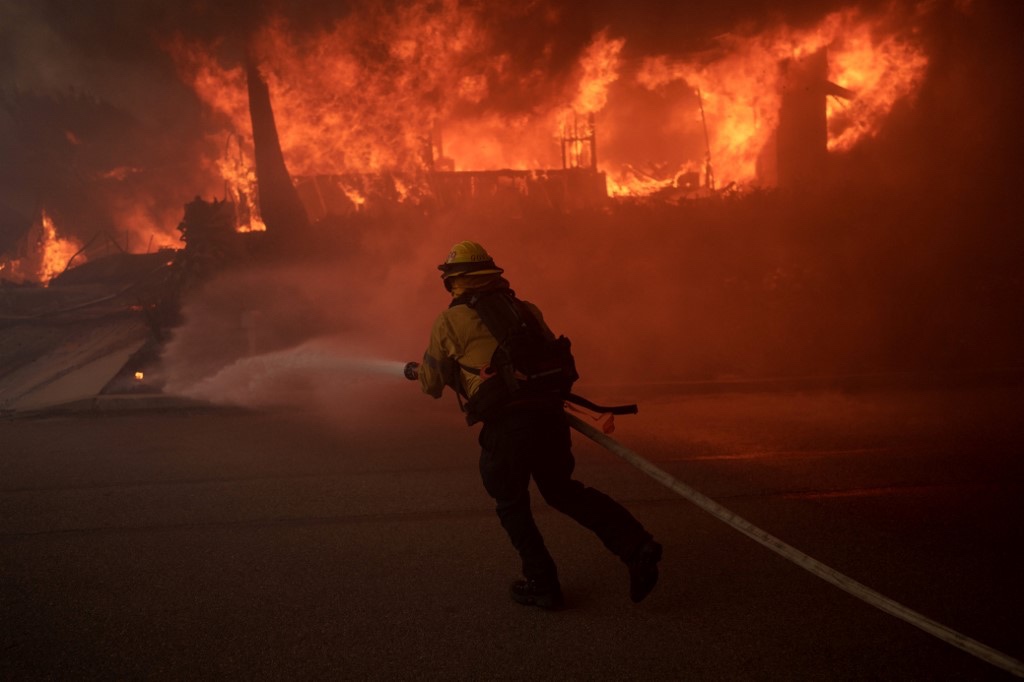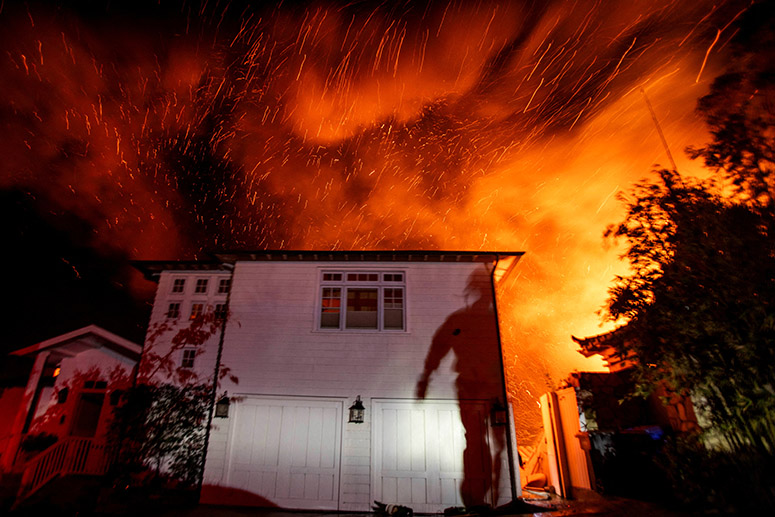EXPLAINER: How did the Los Angeles fires start, and why did they spread so fast?
The city of Los Angeles in California is still reeling from the destruction brought about by intense fires, leading to severe economic damages and casualties.
According to a report by the New York Times, at least 11 people have lost their lives in the disaster, but outgoing US President Joe Biden noted there are "still a lot of people who are unaccounted for."
The destructive fire happened over the luxurious Pacific Palisades neighborhood where many of Hollywood's biggest stars reside. The flames burned over 19,978 acres and destroyed over 1,000 structures that are worth over $3 million (PhP177 million). Celebrities like Leighton Meester and Adam Brody, Mandy Moore, and Paris Hilton have lost their homes to the flames.
Iconic landmarks in the city such as The Getty Villa, Pasadena Jewish Temple and Center, and Theatre Palisades were also claimed by the fires, having been burned to the ground and reduced to rubble.
All of these tragic events took place within just four days since the Southern California wildfires began on Jan. 7, leaving many perplexed at how the fire has spread so quickly, forced nearly 180,000 more to evacuate, and affected more than 13,400 structures so far.
How did the LA fires start?
The first fire to erupt happened in Palisades, which is considered the biggest area in the region. Fires soon started spreading to other places such as the national forest lands north of downtown LA, Sylmar, Acton, the Woodland Hills area of the city, and Granada Hills.
According to a report by BBC News, most of the fires in the area have been significantly contained by Friday night, Jan. 10 with the exception of the ones in Palisades, the national forest lands, and Granada Hills.
While authorities are still investigating what exactly caused the fires, NBC News reported that drought-like conditions mixed with powerful offshore winds led to "fire weather that was, in the words of the National Weather Service, 'about as bad as it gets.'" The media outlet noted that Southern California has had less than 10% of average rainfall since October and that wind gusts that reached 70 mph were recorded in different parts of the region, prompting the agency to issue a red flag warning or an "increased risk for fire danger" to 19 million people.

AP News stated that among the most common causes of fires are "those that are intentionally set and those that are sparked by utility lines." While lightning is another common cause, the news outlet stated that there were no reports of lightning in the Palisades area.
There are no official reports of arson and broken utility lines in connection with the incident so far.
LA District Attorney Nathan Hochman said that investigations on its cause will push through once the fire has been completely contained.
"If it is determined that there is a man-made and intentional setting of any of the fires involved in this situation, the people who committed this arson will be arrested. They will be prosecuted and they will be punished to the full extent of the law," he said.
Why did the fires spread so quickly?
According to experts, the fires intensified so fast largely due to the dry weather that LA is currently experiencing along with "Santa Ana winds," which are "strong and gusty" east or north-easterly winds blow from inland towards the coast. They can happen several times throughout the year due to a "large area of high pressure becoming established over the interior of western US."
Since the source of these winds are "dry, desert areas," they are "lacking in moisture" and thus cause "ripe conditions for wildfire development."
"Like a hair dryer, it then strips the vegetation of a lot of its moisture, meaning that fire can catch quicker and the vegetation burn more readily," BBC lead weather presenter Matt Taylor explained.

Stephen Pyne, emeritus professor at Arizona State University’s School of Life Sciences, also explained why the extraordinary winds are the "main driver" of its rapid spread. "These are near-hurricane force winds. There is no firepower on Earth capable of stopping the flames. They quickly blow past any initial responses fire crews can make, and they will continue until the winds cease or they run out of fuel," she said, per a report by Al Jazeera.
"A primary mechanism for fire spread is not a tsunami of flame: It’s a blizzard of embers. The embers can kindle buildings well ahead of the flaming front. The structures then become a primary fuel, and the fire spreads as an urban conflagration, leaping from structure to structure," she added.
It didn't help that some fire hydrants malfunctioned and suffered a short period of time where water pressure was low. Some also ran out of water for a time in the more elevated parts of Pacific Palisades.
As the city is still striving to put out the inferno, Mayor Karen Bass has vowed to "rebuild the city of Los Angeles" after the wildfire.
"This is going to be an effort of all of us coming together, and we have to resist any effort to pull us apart," she said in a press conference.



